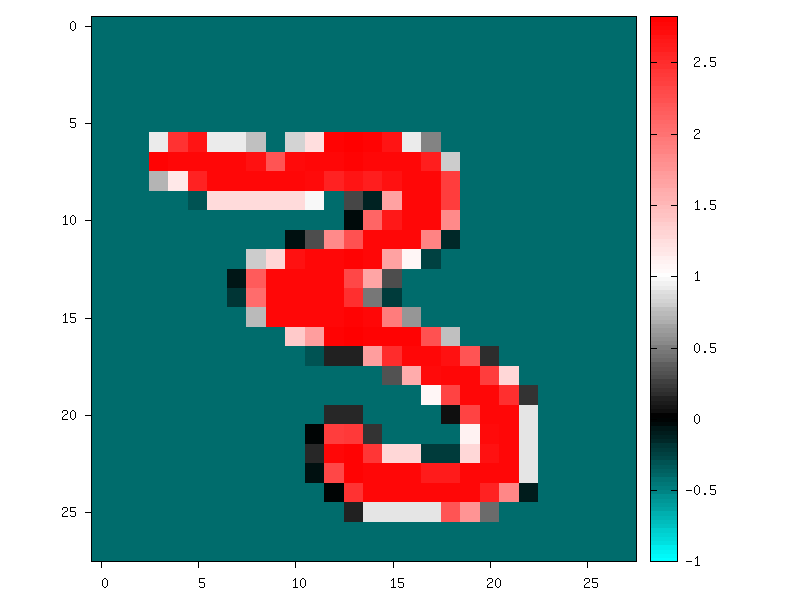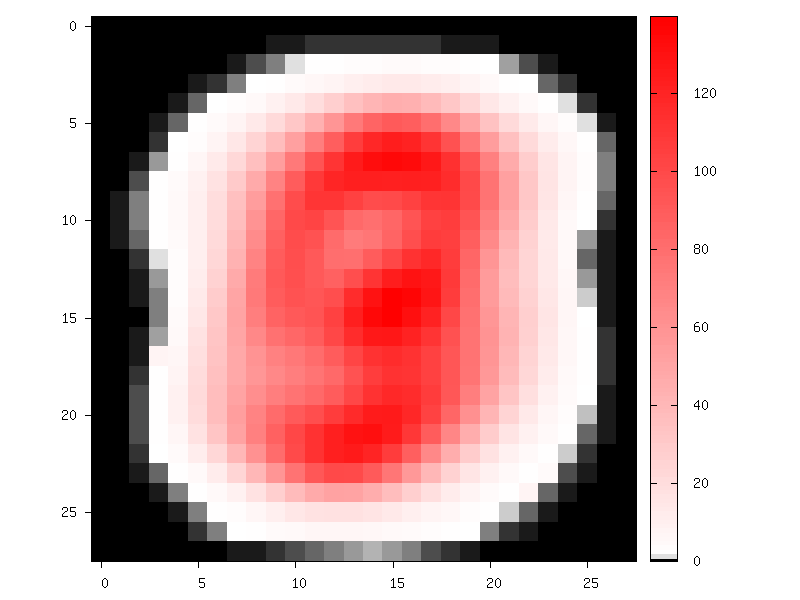Stimuli data analysis¶
You can enable stimuli data reporting with the following section (the
name of the section must start with env.StimuliData):
[env.StimuliData-raw]
ApplyTo=LearnOnly
LogSizeRange=1
LogValueRange=1
The stimuli data reported for the full MNIST learning set will look like:
env.StimuliData-raw data:
Number of stimuli: 60000
Data width range: [28, 28]
Data height range: [28, 28]
Data channels range: [1, 1]
Value range: [0, 255]
Value mean: 33.3184
Value std. dev.: 78.5675
Zero-mean and unity standard deviation normalization¶
It it possible to normalize the whole database to have zero mean and
unity standard deviation on the learning set using a
RangeAffineTransformation transformation:
; Stimuli normalization based on learning set global mean and std.dev.
[env.Transformation-normalize]
Type=RangeAffineTransformation
FirstOperator=Minus
FirstValue=[env.StimuliData-raw]_GlobalValue.mean
SecondOperator=Divides
SecondValue=[env.StimuliData-raw]_GlobalValue.stdDev
The variables _GlobalValue.mean and _GlobalValue.stdDev are
automatically generated in the [env.StimuliData-raw] block. Thanks
to this facility, unknown and arbitrary database can be analysed and
normalized in one single step without requiring any external data
manipulation.
After normalization, the stimuli data reported is:
env.StimuliData-normalized data:
Number of stimuli: 60000
Data width range: [28, 28]
Data height range: [28, 28]
Data channels range: [1, 1]
Value range: [-0.424074, 2.82154]
Value mean: 2.64796e-07
Value std. dev.: 1
Where we can check that the global mean is close to 0 and the standard deviation is 1 on the whole dataset. The result of the transformation on the first images of the set can be checked in the generated frames folder, as shown in figure [fig:frame0Mean1StdDev].

Image of the set after normalization.¶
Substracting the mean image of the set¶
Using the StimuliData object followed with an
AffineTransformation, it is also possible to use the mean image of
the dataset to normalize the data:
[env.StimuliData-meanData]
ApplyTo=LearnOnly
MeanData=1 ; Provides the _MeanData parameter used in the transformation
[env.Transformation]
Type=AffineTransformation
FirstOperator=Minus
FirstValue=[env.StimuliData-meanData]_MeanData
The resulting global mean image can be visualized in env.StimuliData-meanData/meanData.bin.png an is shown in figure [fig:meanData].

Global mean image generated by StimuliData with the MeanData
parameter enabled.¶
After this transformation, the reported stimuli data becomes:
env.StimuliData-processed data:
Number of stimuli: 60000
Data width range: [28, 28]
Data height range: [28, 28]
Data channels range: [1, 1]
Value range: [-139.554, 254.979]
Value mean: -3.45583e-08
Value std. dev.: 66.1288
The result of the transformation on the first images of the set can be checked in the generated frames folder, as shown in figure [fig:frameMinusMean].
![Image of the set after the ``AffineTransformation`` substracting the global mean image (keep in mind that the original image value range is [0, 255]).](../_images/frameMinusMean.png)
Image of the set after the AffineTransformation substracting the
global mean image (keep in mind that the original image value range
is [0, 255]).¶